| Online: | |
| Visits: | |
| Stories: |

| Story Views | |
| Now: | |
| Last Hour: | |
| Last 24 Hours: | |
| Total: | |
Skunks digging, moles tunneling, why are they digging up my lawn?
If you have moles tunneling in your lawn and or skunks digging up your lawn, chances are your lawn is full of Japanese Beetle Grubs. And make no mistake about it, the grubs are silently destroying your lawn from the roots up.
Japanese Beetle Grubs quietly feed on the roots of your lawn. You don’t even know they are there unless all of sudden you have a lot of mole tunnels or suddenly, usually in the fall, skunks start digging in your lawn like crazy. Or even birds will make small holes in your lawn, or even your flower beds looking for grubs to eat.
Yeah, yeah, I know, you can buy mole traps, super sonic mole scaring devices, you can stick chewing gum in the tunnels etc. But that doesn’t solve the problem.
You have to get rid of the grubs!
The grubs are destroying your lawn and they are going to hatch into Japanese beetles next summer and the beetles will not only destroy your landscape, but they will lay even more eggs in your lawn and the process just keeps repeating itself and exponential gets worse.
Let’s start by understanding the life cycle of a Japanese Beetle.
Japanese beetles remain in the larva (grub) stage until about June here in the east. Basically as soon as the soil temperatures start to rise the larva start working their way toward the surface of your lawn. Instinctively, they burrow deep in the late fall to reach a place in the soil where it is warmer as the outside air keeps getting cooler.
Over the winter they pretty much hibernate. Not moving, not eating. But come summer the heat draws them to the surface and in late June, early July the start hatching into flying insects. The Japanese beetle stage. In the beetle stage they have a huge appetite and start devouring all kinds of plants in the landscape. Doing an incredible amount of damage.
This feeding frenzy goes on for weeks, the beetles mate and the females lay eggs in your lawn, each beetle laying 50 eggs or more. The eggs quickly hatch because of the warm soil temperatures and the larva quickly develop into grubs that also have a ferocious appetite. But their diet consists mostly of the roots of your lawn. The grubs quietly eat away at the roots of your lawn, out of sight, but none the less very busy eating the roots to your lawn to the point that if you grab a patch of grass you can simply lift it up, realizing that your lawn is no longer rooted into the soil.
I knew that I had some grubs in my lawn but I procrastinated about doing anything about it. Then one day I came home and notice that big patch of grass had literally been pulled out of my lawn and was missing. I said something to Pam about it and she said; “Yeah, that happened when I was mowing. When I turned a big piece of grass just came loose.”
Hello? That’s not a good sign.
I didn’t even have to look because I knew, but as soon as pulled back another piece of grass that clearly was not attached, I could clearly see that there were more than just a couple of grubs. Then as I looked at other sections of the lawn I could see that the lawn did not look good. Lots of brown areas. Not great big brown areas but a lot of brown blades of grass. Clearly the lawn was in trouble and drying out even when it shouldn’t have been.
I knew that I had to take some action.
Two things that I’ve learned about Japanese Beetle Grubs over the years.
Years ago at a different property I had a similar experience. They were so bad that they actually ate the roots of some ornamental grass that I had in the landscape beds. I had moles tunneling all over my lawn and come fall skunks were digging everywhere.
The solution? I made one, pretty heavy application of a lawn insecticide labeled for grub control.
Problem solved. The skunks quit digging, the moles moved on and never returned. No mole traps, no super sonic mole chasing devised used. Just a simple application of a lawn insecticide.
The other thing that I learned about Japanese Beetle Grubs?
At home our house is located in a small sub-division. Everybody has nice lawns that they take pretty good care of. Everybody has nice landscapes and during the summer we all get attacked by Japanese beetles. Of course with all of the nice turf grass in the neighborhood it’s the perfect environment for Japanese beetles and Japanese beetles grubs and it’s a problem.
At the nursery the situation is very different. I’ve got thousands and thousands of plants, but very little Japanese beetle damage. Why is that? And no, I don’t spray a ton of insecticides in the nursery. So far, in five years that I’ve owned that property I’ve never sprayed an insecticide.
My theory as to why I don’t have much of a Japanese beetle problem at the nursery?
No turf grass. All around the nursery there is very little turn grass. Lots of weeds, lots of weedy fields, but very little in the way of grass. No place for the Japanese beetles to lay their eggs. That’s my theory, make of it as you wish.
What about my Japanese Beetle problem at home?
I got lucky, the skunks are just getting warmed up. I’ve seen them dig up a lawn so bad that it looked as if it had been rototilled.
Knowing that this damage would only get worse I decided that it was time for an application of a lawn insecticide. This is the one that I chose to use for no other reason except that I’ve had good results with Bayer products in the past . . .
A Few things to Keep in Mind When Trying to Control Japanese Beetle Grubs.
Japanese beetles lay their eggs in August.
For the month of August and September Japanese beetle grubs are close to the surface, feeding on the roots of your grass. That’s the ideal time to treat for them. When the soil is still warm and they are close to the surface.
As it gets colder outside the grubs burrow deeper in the soil and hibernate for the winter.
Timing is everything.
Japanese beetle grubs are actually on a three year life cycle. You can treat in the spring just as the new eggs are hatching and at the same time the one year old grubs are ready to emerge and eat up your plants. But August is a great time to treat because the mature grubs are still very near the surface.
Questions, comments, mean things to say? Post them below.
Source: http://mikesbackyardnursery.com/2015/10/skunks-digging-moles-tunneling-why-are-they-digging-up-my-lawn/




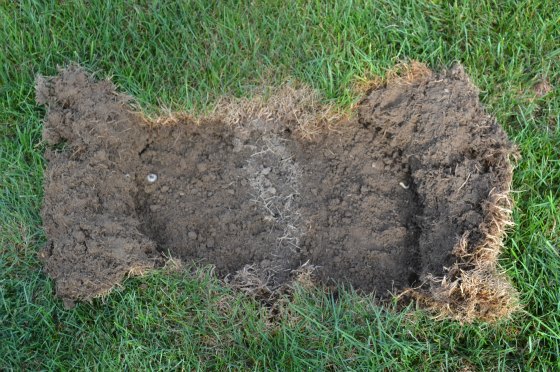
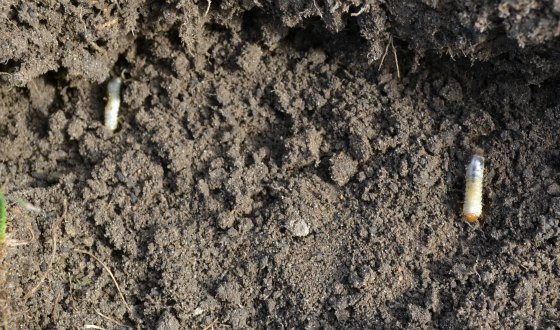
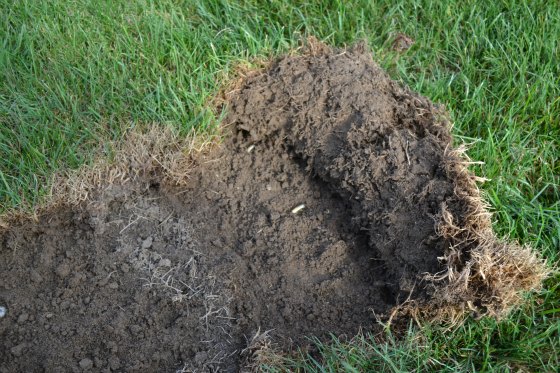
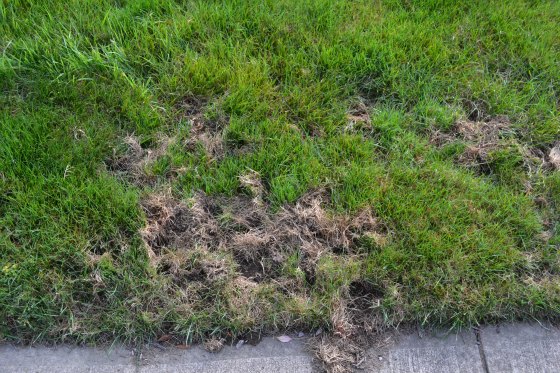
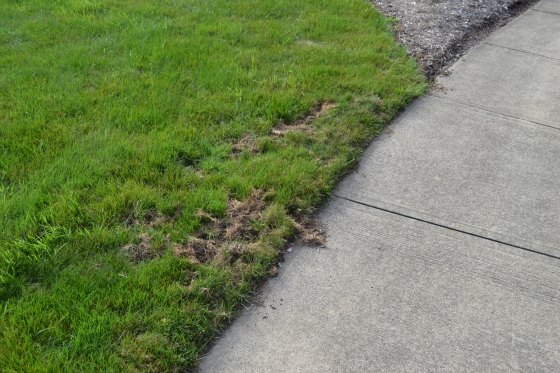
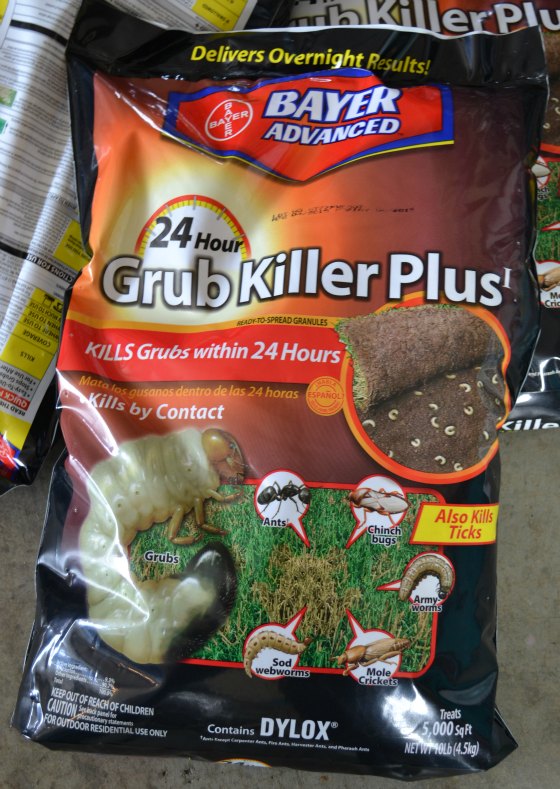

OK question is this grub killer toxic to beneficial insects, birds, and wildlife? Also I bet the landscapers are putting all kinds of fertilizers and herbicides to make those lawns pretty. Run off Rain water from those lawns can get into your garden. Food for thought, I noticed no honey bees in my lawn when my neighbor got his front yard professionally done for years. I only saw bumble bees, wasps and hornets. Within two months of them stopping the spraying of their lawn, the honey bees returned.